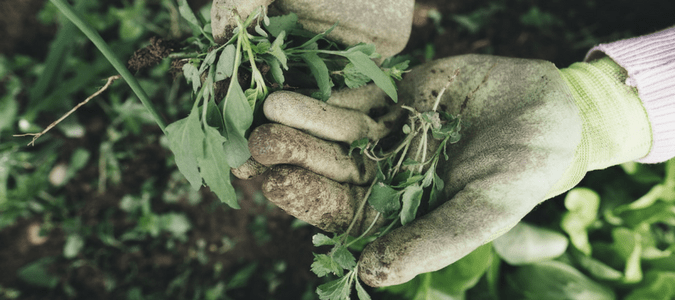
When you look out over your yard, does the sight you see bring you a sense of pleasure and pride, or do you cringe with embarrassment? If you’re in the latter camp due to unsightly weeds and patchy, lifeless grass, don’t despair—and don’t give up! Your yard doesn’t have to be the neighborhood eyesore, and you don’t have to declare your neglected lawn a total loss.
Depending on the severity of your situation, it’s possible that you’ll need to re-sod the entire area, but a far easier fix might work just as well. The simple yet highly effective key lies in overseeding weedy lawns to reclaim the lush, green, beautiful grass that all homeowners desire.
Let’s find out how just a bit of time, care and know-how will help you resuscitate your ailing lawn into a thing of emerald, weed-free beauty.
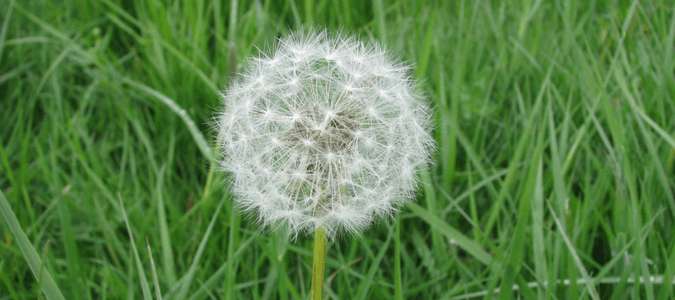
Overseed: Definition And Benefits
The term “overseed” may sound technical and even intimidating if you aren’t familiar with the process, but it’s really a simple gardening concept: Overseeding is simply the process of planting new grass seed over your existing grass in order to create a revived, newly green and beautiful lawn that is lush and healthy.
When you overseed your lawn, you build on its current strengths while working hand in hand with nature against its weaknesses. With a bit of elbow grease, the result is a lush, weed-free lawn that your neighbors will envy.
But how do you know if your yard is a good candidate for overseeding? Grass that is looking tired, patchy or weedy is prime for this relatively easy option for homeowners who want to help their yards recover. If weedy patches and bare spots make up less than half your lawn, overseeding is an excellent option for you. It is certainly easier and more cost-effective than digging up your entire yard and laying down all new sod, which can be an expensive and painstaking process.
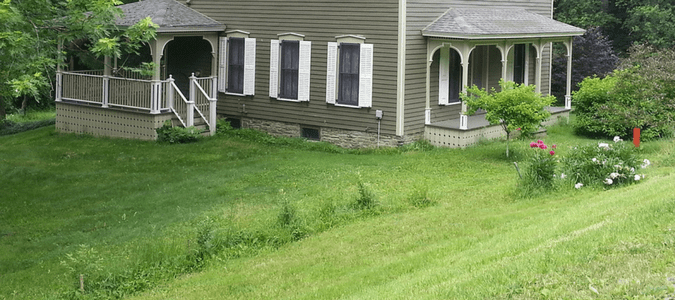
Our Answer To The Common Question: When To Overseed My Lawn?
Many homeowners ask themselves, when is the best time of year to overseed my lawn? No matter which region of the country you call home, there are two times of year that are best for overseeding: early spring and late summer (mid-August to mid-September).
The spring option is best for homeowners who use non-organic fertilizer products containing chemicals that would stop new grass seeds from growing. By overseeding in early spring, you’ll give your existing grass and soil the most time possible to shed all the chemicals that could impede fresh growth.
If non-organic fertilizer use isn’t an issue for your yard, you might opt to overseed in late summer instead. This is generally the time of year when weeds grow the least, making it the best time to address weeds aggressively and effectively. This is also a great time of year to facilitate new grass growth before your turf goes dormant for the winter.
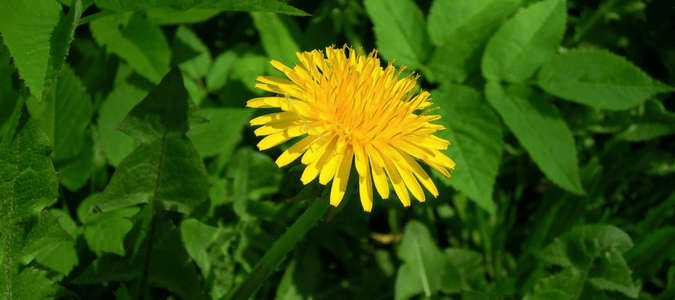
Why Do I Have Weeds In My Lawn In The First Place?
Before we get into the step-by-step process to overseed your lawn, it’s important to discuss how your grass got so weedy and patchy in the first place. After all, you don’t want to put in a lot of work just to have the same issues develop again in the future. So why do you have weeds in your lawn? How do these pesky, fast-growing plants move in and take over?
There are many factors that can contribute to a weedy lawn, including watering too much or too little, setting your mower blade too low, not mowing often enough or having a yard with poor drainage. Essentially, weeds are opportunistic; they grow when and where they can. Grass that is less than thriving provides the necessary space and opportunity for weeds to move in.
When weeds do begin to pop up here and there, chemical weed killers might appeal in the moment, but these products can actually be dangerous for people and animals, not to mention for your grass itself. Plus, if you aren’t careful, you’re likely to find yourself relying more and more often on weed killers to spot-treat your problem instead of resolving it at its source: by growing grass that is dense and vigorous.
The simple truth is that a thick, thriving lawn is the best weed deterrent on the market. Savvy homeowners know that keeping weeds away for good isn’t about finding the right herbicide product—it’s about keeping your grass dense, lush and green, so weeds don’t stand a fighting chance at taking over your lawn.
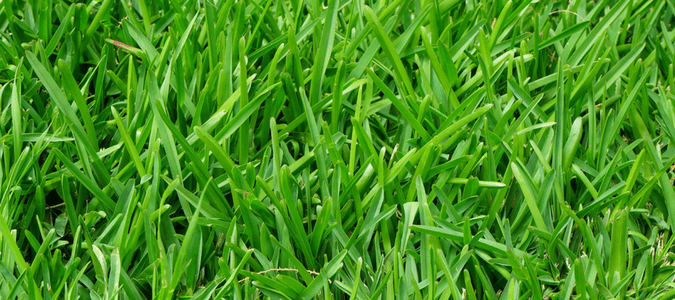
How To Overseed: The Step-By-Step Process, Explained
The first consideration, before you start overseeding your lawn, is choosing the right variety of grass seed. The best options are perennial varieties that will do well both in your geographical region as well as in your particular yard. If you have a yard with large trees and lots of shade, for example, a shade-tolerant variety like fescue might perform better than a different, sun-loving variety like Bermuda. Another thing to consider is how damp or dry your region is, and what type of drainage your yard has. If you live in a wet area or your yard tends to collect moisture, a grass like St. Augustine might fare better than it would in a hotter, drier or sunnier area.
Once you’ve chosen the right grass seed for your yard, it’s time to prep your existing lawn and soil for overseeding. Here are the easy, step-by-step instructions for overseeding your lawn:
- Before you start your overseeding project, it’s important to water your yard deeply. In the days leading up to when you plan to spread your new grass seed, give your lawn a good soaking, allowing water to penetrate up to six inches below the surface. This will give your turf a couple of days to dry out a bit before you begin overseeding.
- Pull up or otherwise remove any large weeds in your existing grass. Bigger weeds can simply be pulled up by hand, preferably from the roots. You can also use an herbicide if you choose; if so, just be sure to follow up with a second application three weeks later to ensure that any new weed growth is also killed off.
- Mow your existing grass. Using a collection bag attachment if your mower has one, mow your lawn as short as possible, preferably to about one and a half inches. Yes, this will make whatever healthy grass you have look bald and terrible for the moment—but don’t worry! There’s a method to the madness. Your new grass seeds are going to need access to sunlight and water as they take root and grow, so it’s very important to facilitate that by getting the existing grass as short as possible. Once you’ve finished mowing, rake up any leftover grass clippings and dispose of them in lawn bags.
- Remove thatch. Thatch is the criss-crossing layer of dead grass roots and stems that lies on top of the soil, just beneath the greener blades of grass. Thatch must be removed so that new grass seeds can reach the soil along with compost, fertilizer and water. In smaller yards, thatch can be removed effectively with a hand-held rake, but homeowners with larger yards may want to rent a power dethatcher from your local garden center to do the job. Also called power rakes or vertical mowers, these machines will leave clumps and piles of grass and thatch; be sure to rake debris up when you’re finished with this step and dispose of it in yard bags.
- Aerate your grass. You can rent an aerator from your local garden center or, if your yard is small (or you simply don’t like the loud noise and gasoline stench of an aerating machine), use a manual aerating tool. Be sure to rake up and dispose of any soil plugs that are dislodged as part of the aerating process.
- Spread a half-inch thick layer of compost over your lawn. Once you’ve got your compost spread evenly, rake it lightly so it can mix with the soil and blend into the aeration holes.
- Fertilize your grass. Grass fertilizers contain nitrogen, phosphorous and potassium—the three most important ingredients in a healthy lawn. You can use either a hand-held spreader for smaller yards or a drop spreader for larger ones to distribute your fertilizer evenly all over the yard.
- Apply grass seed. Using a hand-held broadcast spreader, apply your chosen grass seed over the entire lawn area. The goal is to have about 15 to 20 seeds per square inch, which typically results in several pounds of seed per 1,000 square feet of lawn. You can move in parallel lines as you spread the seed and then, if needed, go back over the area in perpendicular lines to ensure proper, even spreading.
- Use a rake to work the seed very lightly into the existing grass and soil. Be gentle—you don’t want to damage your seeds or interfere with their even distribution.
- Water generously, but not too much, and voilà—you’ve just overseeded your yard!
Over the next days and weeks as your grass begins coming in, be sure to water lightly once or twice a day, making sure the area doesn’t get sopping wet. This will give your lawn just the right amount of moisture until seedlings sprout. Let your new grass grow at least three to four inches before mowing for the first time. Once you’ve mowed the first time, you can switch to a deep-soaking watering pattern. To keep your grass its healthiest over time, be sure to fertilize twice every year, each spring and fall.
ABC Can Keep Your Yard Healthy And Green
Keeping your lawn healthy isn’t just a source of beauty and pride; it is also a practical measure for keeping weeds away. At ABC Home & Commercial Services, we know all about creating and maintaining dense, healthy lawns for our satisfied customers. If your lawn is becoming an eyesore and the overseeding process described above sounds like a little too much for you to handle, ABC is here to help. Our lawn specialists can reclaim and revive tired, weedy, patchy lawns and maintain thriving ones so your yard stays beautiful for years.
